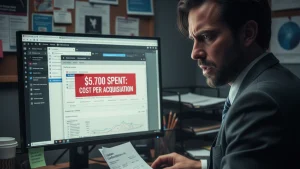Solar Soft Costs Reduction: 5 Profit-Killing Mistakes

Solar Soft Costs Reduction: 5 Hidden Margin Killers Destroying Your Solar Business in 2025
Solar soft costs reduction has become the make-or-break factor for installers and EPCs in 2025. While hardware prices have plummeted, soft costs now represent 78% of total residential installation expenses, according to OpenSolar. Moreover, these non-hardware expenses are quietly destroying profit margins across the industry. Therefore, understanding and eliminating hidden soft costs is critical for survival.
Here’s the reality: your panels aren’t the problem anymore. In fact, National Renewable Energy Laboratory (NREL) data shows hardware costs dropped 50% between 2010 and 2020. However, soft costs remain stubbornly high, requiring an additional 60-70% reduction to make solar truly affordable. Consequently, installers must master solar soft costs reduction techniques to maintain competitive margins.
This comprehensive guide reveals five hidden costs draining your profits—and actionable strategies to slash them by 25-40%.
What Are Solar Soft Costs? (Quick Definition)
Solar soft costs are all non-hardware expenses in a solar installation. These include permitting, customer acquisition, financing, labor, overhead, and interconnection fees. Unlike equipment costs, soft costs vary significantly by location and business operations, making solar soft costs reduction challenging but essential for profitability.
1. Customer Acquisition Costs: The #1 Profit Killer
The Problem
Customer acquisition costs (CAC) have exploded to $0.81 per watt, making them the highest expense in your cost stack. Wood Mackenzie’s 2023 analysis reveals CAC increased from $0.69/W in late 2022. For a typical 7 kW residential system, you’re spending $5,700 just to close one deal. Remarkably, that’s more than the solar panels themselves cost ($0.49/W).
Additionally, high sales commissions consume 5-10% of profit. Expensive lead generation services charge hundreds per contact. Furthermore, solar remains a “considered purchase” rather than an urgent need, which drives acquisition costs higher. Unlike emergency HVAC repairs, homeowners can delay solar for months or years.

Solar Soft Costs Reduction Strategy #1
Build a structured referral program immediately. Research from U.S. Residential Solar PV Customer Acquisition studies shows referrals close 20% of the time versus single-digit conversion for cold leads. Implement these tactics:
- Offer $500-$1,000 incentives per closed referral deal
- Create automated referral request systems post-installation
- Partner with real estate agents and home improvement contractors
- Develop community solar education programs
Results: Companies implementing robust referral programs report 30-40% CAC reduction within 6 months.
Ditch expensive lead gen services. They’re selling the same contact to five competitors. Instead, focus on local partnerships that generate warm leads converting 3-4 times better. Furthermore, invest in content marketing and local SEO to attract inbound leads with lower acquisition costs.
2. Permitting Delays: The Silent Margin Killer
The Problem
Every week stuck in permitting costs real money. Your team handles frustrated customer calls. Your cancellation rate increases. Additionally, you’re managing uncertainty that impacts cash flow. Solar Energy Industries Association (SEIA) reports that in New Jersey alone, permit approvals add $3,800 to $4,500 to average projects. Some installations see costs exceeding $6,000-$7,000.
A groundbreaking Permit Power report found U.S. solar costs up to seven times higher than Australia’s, where instant permitting software is standard. The problem isn’t just fees—it’s inconsistency. Different reviewers in the same jurisdiction have conflicting requirements. Interconnection applications languish for months. Each revision costs $500-$1,000 in engineering time.

Solar Soft Costs Reduction Strategy #2
Standardize your processes proactively. Join programs like SolSmart, funded by the U.S. Department of Energy’s Solar Energy Technologies Office. Many jurisdictions now offer instant permitting for standard residential systems. Therefore, design your systems to qualify automatically.
Partner with professional solar engineering firms specializing in rapid permitting. Companies offering 24-hour PE stamping across all 50 states can reduce timelines from 2-6 weeks to just days. This dramatically improves customer satisfaction while cutting soft costs.
Additionally, maintain relationships with local authorities having jurisdiction (AHJs). Understanding their specific requirements prevents costly revisions. Document successful approaches for each jurisdiction in your service area.
3. Outdated Sales Commission Structures Eating Your Margins
The Problem
Your compensation model needs updating. Currently, you’re paying 6-10% commissions on total sale value in an industry where margins compressed to 10-15%. This structure worked when systems cost $7/watt with 40% margins. However, it’s unsustainable at $3.50/watt with 12% margins.
Moreover, high commissions create churn-and-burn sales cultures. Representatives focus on closing the next deal rather than delivering exceptional experiences. Consequently, this leads to higher cancellation rates and fewer referrals—increasing overall CAC.

Solar Soft Costs Reduction Strategy #3
Implement hybrid compensation models. Move to lower commission percentages (3-5%) plus performance bonuses tied to:
- Customer satisfaction scores (measured via surveys)
- Referral generation metrics
- Project completion rates without cancellations
- Upsell opportunities (battery storage, EV chargers)
Companies making this shift report 20-30% CAC reductions while maintaining sales team productivity. Furthermore, your best salespeople will appreciate compensation tied to quality, not just quantity.
Invest in automation tools reducing manual administrative work. When sales teams spend less time on paperwork, they can focus on actual selling. This means you can pay them well while keeping total costs down. Consider CRM platforms designed specifically for solar installers that streamline proposal generation, contract management, and customer communication.
4. Financing and Payment Processing: The Hidden Tax
The Problem
Credit card processing fees for solar are brutal. Banks typically charge 3-3.5% for solar transactions. For a $20,000 installation, you’re paying $600-$700 just for payment processing. A mid-market solar company can rack up thousands in annual fees.
That’s just the obvious cost. Many installers don’t account for the operational overhead of offering financing. Time spent explaining options, deals lost due to uncompetitive rates, and managing multiple financing partners all drain resources. Additionally, weighted average cost of capital (WACC) in the U.S. solar industry runs around 4.3%, according to International Energy Agency (IEA) research.

Solar Soft Costs Reduction Strategy #4
Negotiate better payment processing rates. Switch to processors specializing in solar offering rates as low as 2.5%. Additionally, offer ACH/bank transfer discounts (1-2% off) encouraging customers to avoid credit cards altogether.
Partner with specialized solar lenders who handle the heavy lifting. The time your team saves will exceed any fee splits. Look for lenders offering:
- Competitive interest rates (below 6%)
- Fast approval processes (24-48 hours)
- Seamless integration with your proposal software
- Multiple product options (loans, leases, PPAs)
Furthermore, educate customers on available incentives. The federal Investment Tax Credit (ITC) provides 30% tax credits through 2032. However, homeowners must understand timing—Congress has proposed ending residential credits after 2025, though this hasn’t passed yet.
5. Supply Chain Chaos and Bloated Overhead
The Problem
Your overhead probably runs higher than you think. Industry averages show 20-35% of total costs going to office rent, insurance, equipment maintenance, and administrative staff. Add supply chain headaches—component delays, last-minute substitutions, emergency shipping fees—and you’ve got another 5-10% in hidden costs.
The Department of Energy analysis confirms hardware costs dropped dramatically, but soft costs need to fall an additional 60-70% to make unsubsidized residential solar truly affordable. Your overhead and supply chain inefficiencies are a major part of that gap.

Solar Soft Costs Reduction Strategy #5
Streamline operations ruthlessly. Every process involving more than three people or taking longer than 24 hours costs money. Implement project management software providing real-time visibility into every job. Solutions like specialized solar CRM platforms can cut administrative time by 40%.
Build strategic supplier relationships maintaining inventory of critical components. The cost of a two-week delay waiting for a $200 part far exceeds paying slightly higher prices to reliable suppliers. Additionally, negotiate volume discounts and payment terms improving cash flow.
Consider outsourcing non-core functions. Professional solar engineering firms can handle:
- Design and engineering services
- PE stamping (Professional Engineer approval)
- Permit application preparation
- Utility interconnection applications
EnergyScape Renewables and similar firms offer “overnight engineering” with 24-hour turnarounds, dramatically reducing your internal overhead while accelerating project timelines.
The Bottom Line: Your Solar Soft Costs Reduction Action Plan
Solar soft costs reduction isn’t optional anymore—it’s survival. Focus on these five areas systematically:
- Customer acquisition: Build referral programs and local partnerships
- Permitting: Standardize processes and use professional engineering
- Sales compensation: Implement hybrid models tied to quality metrics
- Financing: Negotiate better rates and partner with specialists
- Operations: Streamline ruthlessly and outsource non-core functions
Realistically, you can cut soft costs by 25-40% within 6-12 months. For a company generating $5 million in annual revenue with 12% margins, that’s an extra $150,000-$300,000 in profit. Additionally, improved efficiency leads to faster project completion, better customer satisfaction, and more referrals.
The solar installers thriving in 2025 won’t be those with the cheapest panels. They’ll be the ones who’ve mastered operational efficiency and customer experience. Start tackling these hidden costs today, and you’ll outperform 90% of your competition.
Take Action: Partner With Experts Who Understand Solar Soft Costs Reduction
Managing all these moving parts—from engineering and permitting to project management—requires serious operational expertise. That’s where the right technology and partners make all the difference in your solar soft costs reduction strategy.
Streamline Engineering & Permitting with Energyscape Renewables
If permitting delays and engineering bottlenecks are eating your profits, Energyscape Renewables delivers exactly what you need. As a licensed solar engineering firm operating nationwide, they offer end-to-end solutions including:
- 24-hour PE stamping across all 50 states
- Rapid permitting with first-time AHJ approval rates exceeding 95%
- Comprehensive design services from residential to utility-scale projects
- “Overnight engineering” capability delivering approvals within 24 hours
- Strategic supply chain partnerships maintaining critical component inventory
Their streamlined processes help you cut cycle times, reduce rework, and minimize those hidden soft costs draining your margins. Furthermore, their expertise in AHJ compliance ensures your projects move from design to installation without costly delays. Learn more about Energyscape Renewables and discover how they’re helping installers achieve significant solar soft costs reduction.

Optimize Operations with Sunscape’s Solar CRM
If you’re drowning in spreadsheets, juggling multiple tools, and losing track of project details, Sunscape is your answer. This complete solar project management CRM was built specifically for solar installers who need to control costs and maximize efficiency. Sunscape helps you achieve solar soft costs reduction through:
- Solar-specific CRM features managing customer relationships from lead to installation
- Project tracking capabilities giving real-time visibility into every job
- Site survey apps streamlining field operations and reducing site visit costs
- Team coordination tools eliminating communication gaps and rework
- Automated workflows cutting administrative time by 40%
By centralizing all project data in one solar-specific platform, Sunscape eliminates the chaos that drives up overhead costs. Your team spends less time on administrative tasks and more time closing deals and completing installations. The result? Lower CAC, faster project completion, and improved profit margins. Discover Sunscape’s solar project management CRM and see how installers are cutting operational costs while scaling their businesses.
Don’t let soft costs and operational inefficiencies hold your solar business back. These specialized tools and partners understand that efficiency, quality, and streamlined processes drive long-term success in the solar installation industry. Implement the right combination of professional engineering services and purpose-built project management software to achieve the solar soft costs reduction your business needs to thrive in 2025.
People Also Ask: Solar Soft Costs Reduction FAQs
What percentage of solar costs are soft costs?
Soft costs represent 78% of total residential solar installation costs in 2025, according to OpenSolar. This includes permitting, customer acquisition, labor, financing, and overhead expenses.
How can solar installers reduce customer acquisition costs?
Implement structured referral programs offering $500-$1,000 incentives, partner with local contractors, focus on content marketing, and avoid expensive lead generation services. These strategies can reduce CAC by 30-40%.
What are the main soft costs in solar installation?
The five main soft costs are: (1) Customer acquisition ($0.81/W), (2) Permitting and inspections ($3,800-$7,000), (3) Sales commissions (6-10%), (4) Financing fees (3-3.5%), and (5) Overhead and supply chain (20-35%).
Why are U.S. solar installation costs higher than other countries?
U.S. solar costs are up to 7x higher than Australia due to complex permitting across 20,000+ jurisdictions, lengthy interconnection processes, higher customer acquisition costs, and fragmented regulatory requirements.
What is the average profit margin for solar installers?
Residential solar installation profit margins typically range from 10-12%, while commercial projects achieve 15-20% margins. However, many installers struggle with margins below 10% due to high soft costs.
How long does solar permitting take in the United States?
Permitting timelines vary from 2-6 weeks in most jurisdictions, though some areas with streamlined processes offer instant or same-day approvals. Delays can extend to several months in jurisdictions with outdated systems.
What is the best way to reduce solar engineering costs?
Partner with licensed solar engineering firms offering standardized designs, 24-hour PE stamping, and pre-approved plan sets. This eliminates in-house engineering overhead and reduces permitting rejection rates.

sjayakanth@energyscaperenewables.com